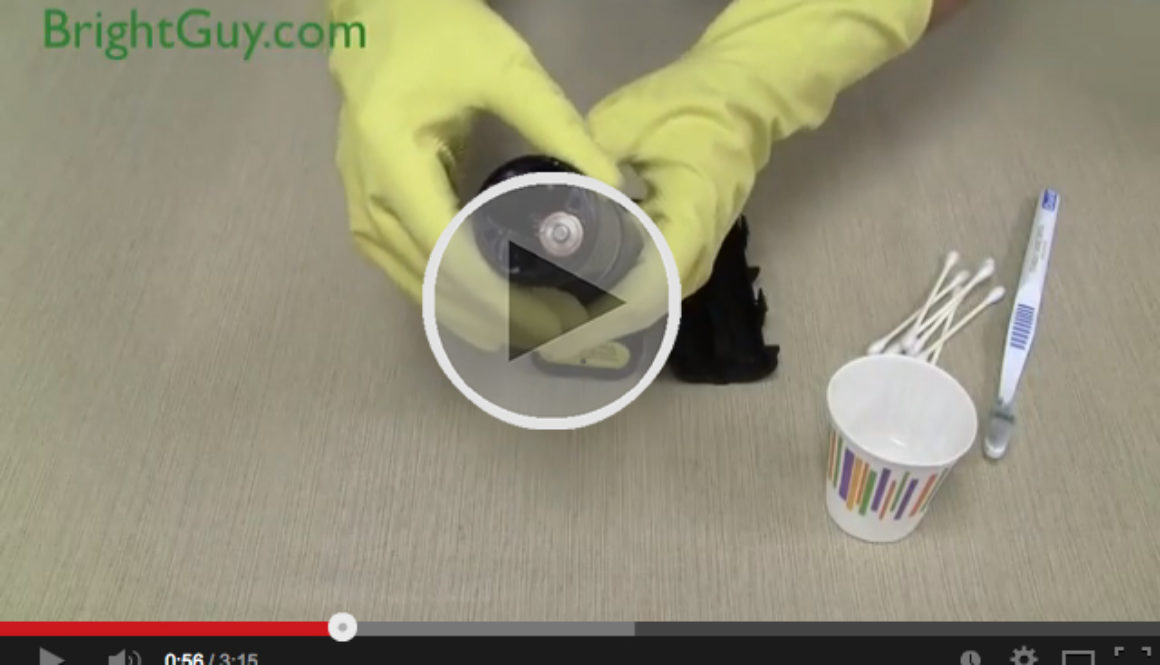Tips for Cleaning a Corroded Flashlight after Alkaline Batteries Leak
Alkaline battery leakage is by far the most common flashlight problem that we see. If you catch the leak early enough, it can be possible to fix corrosion with some light cleaning. BrightGuy and Flashlight University have teamed up to bring you some quick tips on how to clean up after alkaline batteries have damaged your flashlight.
Part 1: Why do alkaline batteries leak?
As alkaline batteries age or discharge, the chemistry of the battery changes. One byproduct of this chemical change is hydrogen gas. The excess gas causes a pressure build up inside the battery which can eventually rupture the battery seal and potassium hydroxide will leak out.
Part 2: How to prevent battery leakage
There are many factors that can contribute to alkaline batteries leaking, but there are safeguards you can take to help prevent it. The most important thing you can do is store the batteries properly. Don’t store batteries in an environment that has drastic temperature changes, especially in hot environments like a vehicle. This will cause the batteries to drain faster and the internal seals to wear down more quickly. The ideal temperature for alkaline battery storage is between 50 and 77°F.
If you don’t plan to use the flashlight very often, we recommend storing the batteries outside of the flashlight. That way, if they leak, they will not damage the flashlight itself. You can store the batteries in a convenient battery caddy so they will be held secure and won’t accidentally short circuit each other.
Don’t use batteries of different brands or discharge states in the same flashlight. This can lead to reverse charging which weakens the batteries and can make them prone to leaking.
Don’t use dented or otherwise damaged batteries. Batteries with damage are more likely to have weakened cell walls which can cause leakage. Even batteries that don’t exhibit any external signs of damage can have an internal short if dropped.
Lastly, consider purchasing a flashlight that can be powered by lithium batteries instead of alkalines. Lithium batteries have better cold weather performance and are much less likely to leak than alkaline batteries.
Part 3: Tips to cleaning a damaged flashlight
Always wear gloves when handling leaking batteries. The potassium hydroxide is a caustic skin and eye irritant. Try to remove the batteries if possible. This can take some effort, especially if the leakage is widespread. If you cannot remove the batteries, the damage is most likely too extensive to repair.
Clean the flashlight with white vinegar and a small brush. The acidic vinegar helps to counteract the basic compound potassium hydroxide. If the corrosion is more extensive, you can soak the flashlight in the vinegar for several minutes.
When you are done cleaning, rinse the body thoroughly with clean water. Pat the flashlight dry with a towel as much as you can, and allow to air dry completely before use.
If cleaning the corroded flashlight doesn’t seem to do the trick, battery manufacturers such as Duracell, Energizer, and Rayovac warranty their alkaline batteries to not leak before the printed date on the wrapper. Many will repair, replace, or refund you the cost of the flashlight if you send it to them. Visit the websites below for information on their alkaline battery warranties:
Energizer: http://data.energizer.com/PDFs/non-rechargeable_FAQ.pdf
Duracell: http://www.duracell.com/en-us/battery-care-and-disposal/duracell-battery-guarantee
Rayovac: http://www.rayovac.com/Contact-Us/Warranty-And-Guarantee.aspx
Make sure to visit BrightGuy.com to view our entire stock of over 500 different types of flashlights. BrightGuy stocks over 500 different flashlights and is an authorized distributor for Streamlight, SureFire, Fenix, Maglite, Princeton Tec, Petzl, LED Lenser, Nitecore and more. And follow Flashlight University for the latest flashlight news, video reviews, and how-to’s!

